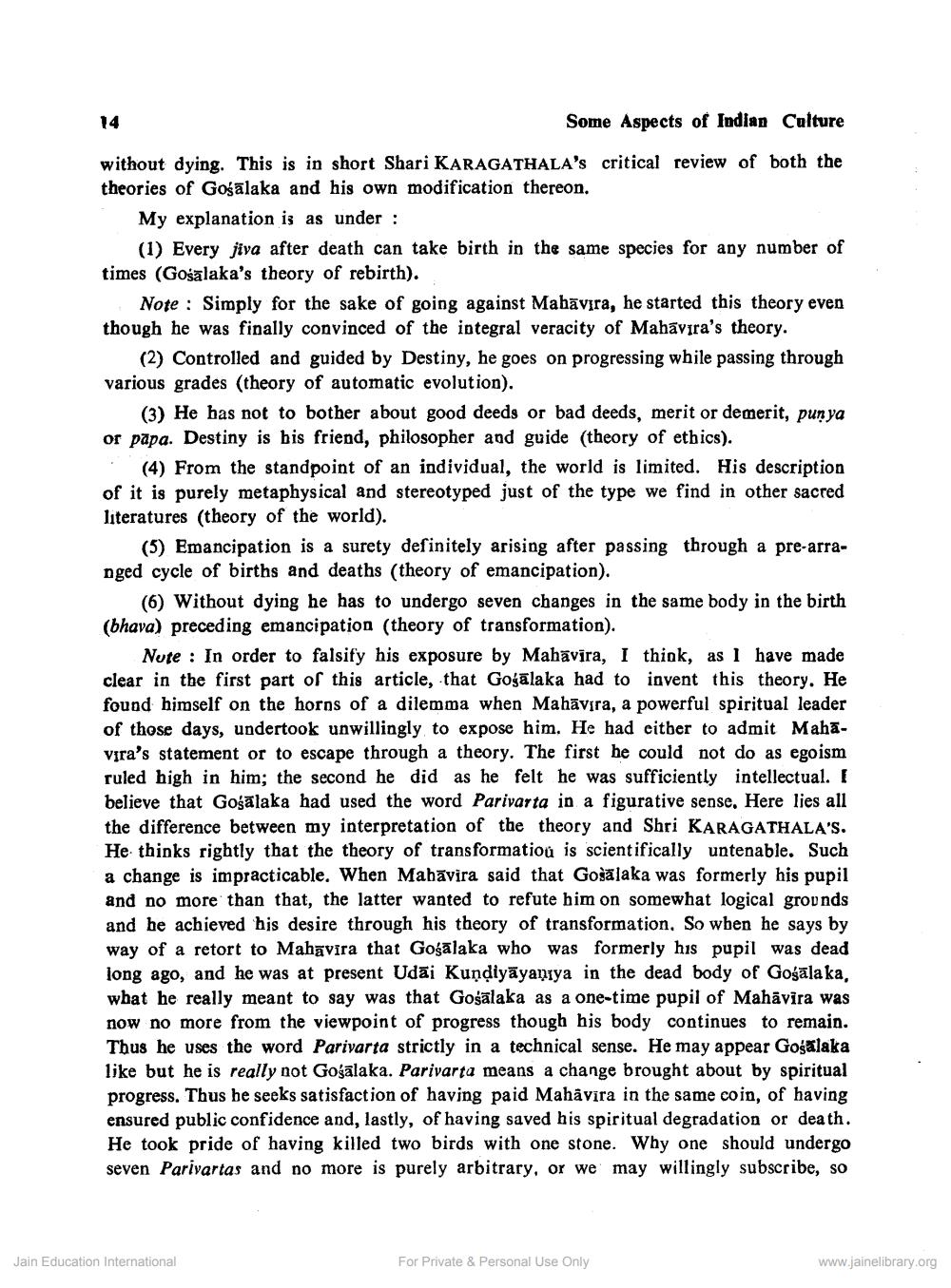________________
Some Aspects of Indian Culture without dying. This is in short Shari KARAGATHALA's critical review of both the theories of Gośālaka and his own modification thereon.
My explanation is as under :
(1) Every jiva after death can take birth in the same species for any number of times (Gośālaka's theory of rebirth).
Note : Simply for the sake of going against Mabāvira, he started this theory even though he was finally convinced of the integral veracity of Mahavira's theory.
(2) Controlled and guided by Destiny, he goes on progressing while passing through various grades (theory of automatic evolution).
(3) He has not to bother about good deeds or bad deeds, merit or demerit, punya or papa. Destiny is bis friend, philosopher and guide (theory of ethics).
(4) From the standpoint of an individual, the world is limited. His description of it is purely metaphysical and stereotyped just of the type we find in other sacred literatures (theory of the world).
(5) Emancipation is a surety definitely arising after passing through a pre-arranged cycle of births and deaths (theory of emancipation).
(6) Without dying he has to undergo seven changes in the same body in the birth (bhava) preceding emancipation (theory of transformation).
Nute : In order to falsify his exposure by Mahāvīra, I think, as I have made clear in the first part of this article, that Goğālaka had to invent this theory. He found himself on the horns of a dilemma when Mahāvira, a powerful spiritual leader of those days, undertook unwillingly to expose him. He had either to admit Mahā. vira's statement or to escape through a theory. The first he could not do as egoism ruled high in him; the second he did as he felt he was sufficiently intellectual. I believe that Gośālaka had used the word Parivarta in a figurative sense, Here lies all the difference between my interpretation of the theory and Shri KARAGATHALA'S. He thinks rightly that the theory of transformatiou is scientifically untenable. Such a change is impracticable. When Mahavira said that Gošalaka was formerly his pupil and no more than that, the latter wanted to refute him on somewhat logical grounds and he achieved his desire through his theory of transformation. So when he says by way of a retort to Mahavira that Gośālaka who was formerly his pupil was dead long ago, and he was at present Udāi Kundiyāyaniya in the dead body of Gośālaka, what he really meant to say was that Gośālaka as a one-time pupil of Mahavira was now no more from the viewpoint of progress though his body continues to remain. Thus he uses the word Parivarta strictly in a technical sense. He may appear Gogalaka like but he is really not Gośālaka. Parivarta means a change brought about by spiritual progress. Thus be seeks satisfaction of having paid Mahāvīra in the same coin, of having ensured public confidence and, lastly, of having saved his spiritual degradation or death. He took pride of having killed two birds with one stone. Why one should undergo seven Parivartas and no more is purely arbitrary, or we may willingly subscribe, so
Jain Education International
For Private & Personal Use Only
www.jainelibrary.org




